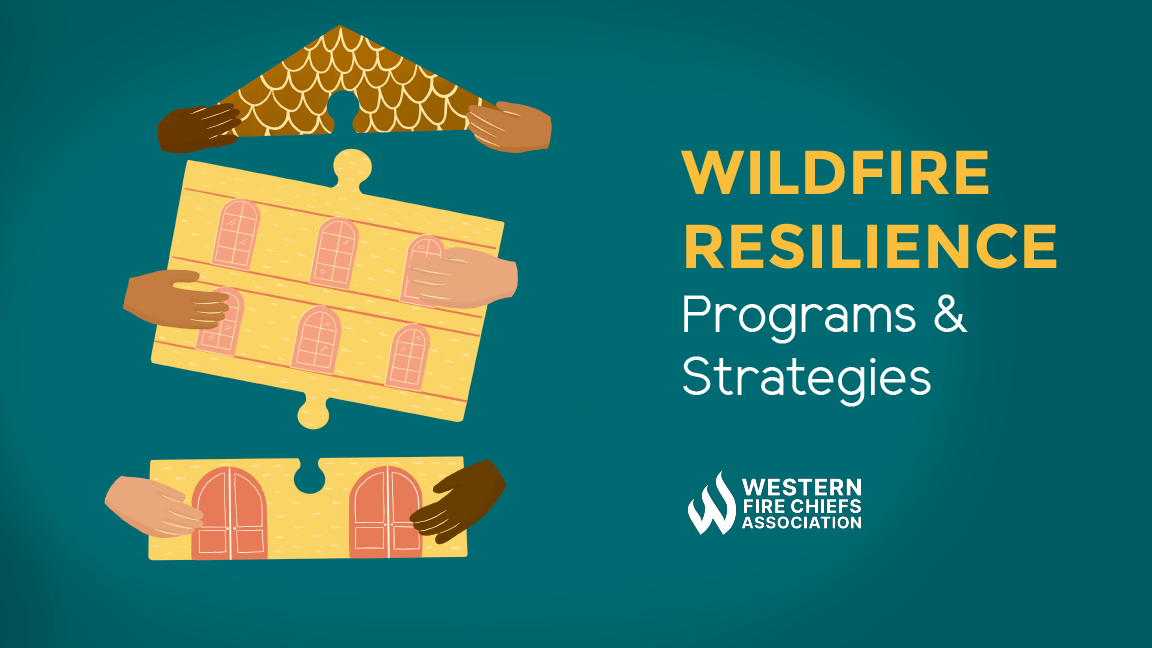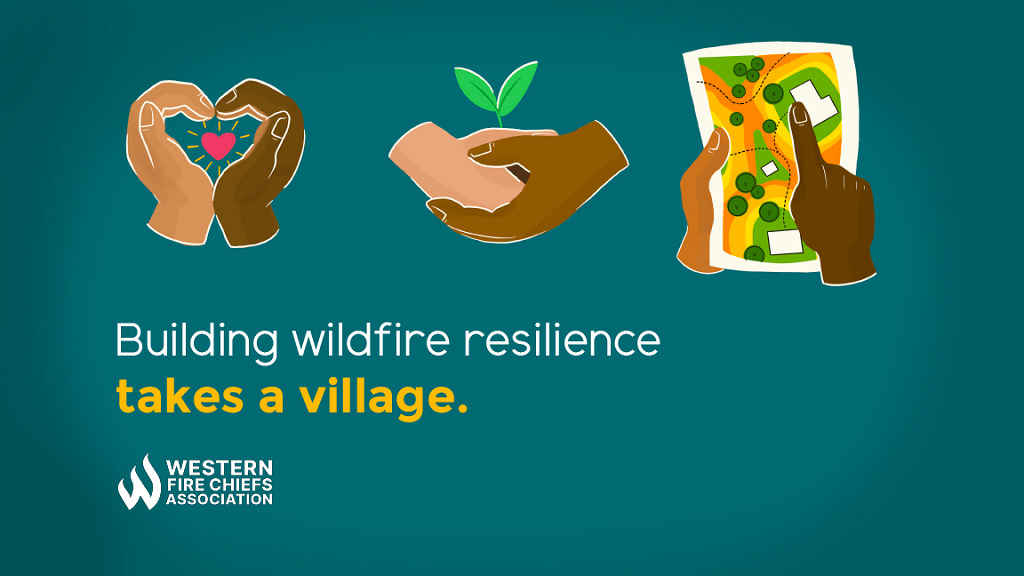Fire Pit Safety Tips
Stay safe around the campfire with tips from the Western Fire Chiefs Association. Learn essential precautions and practices for a worry-free outdoor campfire.
Learn more about the programs and strategies that are dedicated to wildfire resilience, and why they are increasingly important with guidance from the WFCA.
Published:April 18, 2023
Edited:March 1, 2024

Learn more about the programs and strategies that are dedicated to wildfire resilience, and why they are increasingly important with guidance from the WFCA.
Wildfires affect every state in the U.S. Some states have greater risk due to the size and frequency of fires in their climate, but all communities can benefit from knowing the dangers of wildfire and how to reduce these risks. There are government programs, tools, and funding sources available to mitigate wildfire damage and improve recovery times if a fire sweeps through your community.
According to FEMA, a community’s resilience is a measure of its ability to prepare for anticipated natural disasters, adapt to changing conditions, and recover quickly after a disaster.1 Resilience is based on many factors, including existing social infrastructure, socioeconomic status, community capital, a community’s institutional capacity, housing and infrastructure, and the local environment and climate.2
Wildfire resilience strategies limit the impact fire has on lives, property, and communities. Many of these strategies can be implemented in counties or neighborhoods. Increasing wildfire resilience involves effective land use planning, land management, and community engagement.3
Wildfires have been increasing in severity in recent years. The rising frequency and intensity of these fires is due to climate change’s effect on regional weather, overgrown forests, and a growing wildland-urban interface (WUI) as more homes are built near wild areas at high risk of fire. Wildfire risk is also a growing after a century of rigorous fire suppression, which has affected wildfire patterns and negatively impacted forest health.4
The effects of climate change require communities to build resilience against natural disasters. In the case of wildfire, climate change is causing hotter temperatures, reducing rainfall, extending fire seasons, and making wildfires possible or more likely to occur in areas that have not previously had major fire risk.5
There are many federal programs to fund wildfire risk mitigation efforts and support building resilience. It costs approximately $1,000 to treat an acre of forest or rangeland to reduce catastrophic wildfire risk in that area.6
The federal departments that support wildfire resilience programs are:
There are also cross-departmental initiatives, such as the Promoting Ecosystem Resilience and Fire Adapted Communities Together (PERFACT) Partnership or the Community Planning Assistance for Wildfire (CPAW) Partnership. Public-private, private, and nontraditional wildfire mitigation initiatives can also leverage federal dollars (e.g., Environmental Impact Bonds/Funds, water funds, and direct partnerships) to support wildfire resilience initiatives.6
Projects focused on reducing hazardous fuels, prescribed burns, and mechanical treatments are all eligible for federal funding. Some programs include wildfire resilience as a fringe benefit, such as managing insects and diseases, ensuring watershed health, and regulating timber production.6

Community plans for hazard response, evacuation planning, and tenant and community engagement are key ways to build wildfire resilience in areas that are at high risk for fire.5
There are state-level wildfire resilience programs in varied stages of development throughout the Western states. For example, CAL FIRE resilience programs work to improve the health and productivity of private forest lands and reduce wildland fire risks.7
The U.S. Department of Agriculture (USDA), Forest Service has established a new Wildfire Crisis Strategy. This strategy, announced in 2022, has a 10-year goal of treating 50 million acres of firesheds, or forests and rangeland that are at high risk of wildfire. Forest management is a priority of this strategy, including thinning forests, prescribed burns, fuel reduction, and restoring forest health.8
The Department of the Interior is investing $1.5 billion over five years to monitor, maintain, and treat wildfire risks in ecosystems and communities throughout the U.S. Funding will initially go toward improving firefighter pay and building wildfire resilience in high-risk areas. The investment, which had a first payment of $228 million in 2023, will also go toward new firefighter training opportunities, managing fuels, rehabilitation and recovery efforts in burned areas, and funding research into climate change’s impact on fire management.9
Areas at high risk of wildfire are also often in high demand as real estate, despite the risks. While people look for houses in the WUI to enjoy the beauty of nature and privacy from neighbors, as well as more affordability away from urban areas, this puts homes and lives in danger of fire. According to the USDA Forest Service, one in three homes is in the WUI.4 Even communities farther from wildland are more likely to be affected by smoke, power outages, or evacuations from wildfires.5
Smart real estate developers work to integrate preventative and mitigating measures into new construction. There are strategies to protect indoor air quality, resist embers getting into homes, and using fire-resistant materials in building new homes.5 Developers may also consult fire experts earlier in the permitting, design, and development process of building housing communities. Individual homeowners can practice fireproofing strategies on their property to increase the chances of their home surviving a fire.
The real estate sector is starting to support large-scale land management and restoration efforts to mitigate wildfires. Through certain programs, government agencies help fund the private sector in building wildfire resilience, and nongovernmental organizations can help engage the community, educate, and assist with recovery after a fire.5
Stay safe around the campfire with tips from the Western Fire Chiefs Association. Learn essential precautions and practices for a worry-free outdoor campfire.
Discover essential firework safety tips to ensure a dazzling display without accidents. Learn how to celebrate responsibly with expert guidance from WFCA.
Explore the role of AI in wildfire prediction with guidance from the WFCA. Learn how advanced algorithms and data analytics enhance early detection and response.